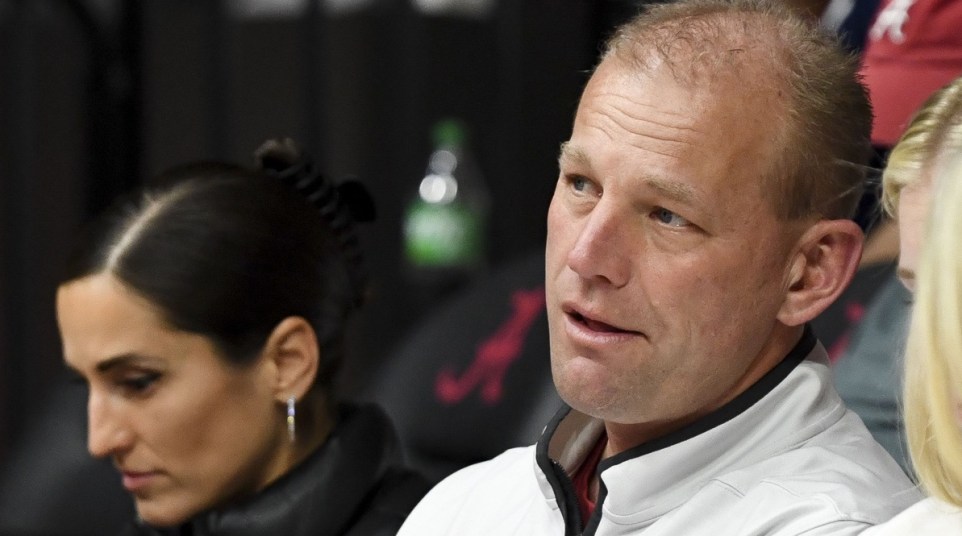
O'Gara: Why we should brace for major post-spring transfer portal moves (except for 1 position)
Brace yourselves, college football fans. Change is coming.
OK, I hate myself for typing those sentences because you could apply that to anything that’s happening in the sport right now. Let’s be a little bit more creative on the second attempt.
Brace yourselves, college football fans. Post-spring portal movement is going to reach new heights when it opens on April 16 and lasts through April 30.
Why? What makes this year different from any other with the post-spring window, which has typically been a much lighter version of the post-regular season window?
It’s simple. Tennessee’s victory against the NCAA made NIL-related rules unenforceable. Ergo, get ready for some tampering.
If you don’t think that’s happening as we speak, your head is in the sand. It might not be Jordan Addison-to-USC levels of expected tampering, but this is a reality during a time when the NCAA’s power has been stripped and there is a lack of regulations. Will that change eventually? Probably, but it certainly won’t change during this post-spring window, wherein guys can also leave schools without even having to worry about the NCAA waiver needed for multiple transfers.
RELATED: Interested in learning more about Daily Fantasy Sports? Check out SDS’s list of our favorite fantasy betting apps to get started!
Let’s also not forget that the Nick Saban retirement happened after the post-regular season window closed, which set the wheels in motion for 30-day transfer windows at Alabama, Washington and Arizona. Those teams — 2 of which have a top-5 quarterback in the sport in Jalen Milroe and Noah Fifita — have more incentive than ever to attack the post-spring window after they had to be subject to a feeding frenzy during that month post-coaching change.
If I really wanted to go full-galaxy brain here, I’d also add that if boosters/collectives feel that a new business model with media contract-funded rosters is on the horizon for college football, perhaps there’s some increased spending. If that’s what it takes to sneak into the new 12-team Playoff, so be it.
That’s why it feels like the post-spring moves are coming in bunches, but not at quarterback.
Why not? What makes that position different from others in the post-spring window?
I maintain that post-spring quarterback transfers are few and far between because of the reps needed. Yes, Joe Burrow was unbelievable as a post-spring transfer. Sure, Will Levis led Kentucky’s best offense in 14 years (he announced his move before spring but transferred officially after spring ball). But look at how limited those 2 guys were in their offenses when they started in Year 1. That’s the issue. It’s a move that feels like it’s only done out of major necessity, whereas we know the post-regular season quarterback transfers have a bit more of a runway to get full QB1 reps in spring and fall camp.
History suggests that the post-spring window options at quarterback aren’t particularly promising. If you don’t believe me, here were the most notable post-spring quarterback transfers in 2023:
- TJ Finley
- Payton Thorne
- Tyler Buchner
- Ben Bryant
- Casey Thompson
- Jaylen Henderson
Yeah, that’s not exactly an Earth-shattering list. Only a diehard could tell you where those guys were at both pre-transfer and post-transfer.
That’s not to say the post-spring window will have quarterback movement. I fully expect a few contenders to make additions. It wouldn’t surprise me if a couple of established starters left for greener, NIL-related pastures. I actually handicapped what that market could look like at the beginning of spring:
But until we actually see it in the post-spring window at quarterback, I won’t hold my breath on splashy moves. There needs to be the right fit for both parties to make moves like that happen. At this stage of the game, the vast majority of “Core 4” (it’s no longer “Power 5”) teams know what they’re doing at the most important position.
Everywhere else, however, feels like fair game.
Well, it’s still somehow not “fair game” for post-spring transfers within the SEC. That can still happen, but under current conference rules, SEC players had to transfer to their new SEC school before the Feb. 1 to be eligible for the 2024 season.
But for everyone else, it’s fair game.
When Addison left Pittsburgh for USC after spring ball in 2022, it caused quite the stir (especially from Pat Narduzzi). He was coming off the Biletnikoff Award, and quickly, the dots were connected that he wanted to catch passes from Caleb Williams in a Lincoln Riley offense. The fact that he reportedly got taken care of from NIL standpoint prompted some of the “college football is broken” takes.
What that argument ignored was that if Addison stayed at Pitt for 2022, he was going to be catches from a new quarterback because Kenny Pickett was off to the NFL Draft (he was the first QB taken) and he would’ve had a new offensive coordinator because Mark Whipple left for Nebraska. Pitt ended up attempting 9 fewer passes per game in 2022 while Addison caught passes from the Heisman Trophy winner en route to getting selected in the first round of the NFL Draft in 2023.
There was more than just immediate financial incentive for Addison to leave Pitt, despite what many claimed when news first broke. We could have cases in the post-spring window that are simply about financial incentive and nothing else. Alternatively, we could have cases of guys that leave good situations for great situations. That’s the sport as it stands.
My advice? Brace for it.

21+ and present in NY, NJ, PA, CT, AZ, CO, IA, IL, IN, KS, KY, LA, MA, MD, MI, NH, OH, OR, TN, VA, WV, WY. Gambling problem? Call 1-800-GAMBLER.


GREAT advice, Connor…thanks
What advice do you have for oil futures and should I stock up on gold coins?
Remember Hump you heard it here and from TDOW,
buy low, sell high
The hard part is figuring out how high is high.
So, the SEC can enforce a time limit transfer, BUT the NCAA can’t. How is that even possible?
Some player just needs to take it to court and that will change also. It just hasn’t been challenged yet.
I meant to follow this up with the possibility that these boosters ?MIGHT already be paying these players per game or “only if they are healthy”, “eligible”, “any number of contract details”….. and to me, this is just one more characteristic of a game that is even less college football like. I don’t see how this makes college football a better product to watch?, instead it just moves it closer to the NFL part of our brain. But I only watch the NFL playoffs…. I skip the regular season!
Guess which school is most likely to try and buck the rule?
I believe I know who you are thinking, but I would not mind if it was LSU if it was the right player.
UT buying Perkins?
That is definitely not what I was thinking about.
Haha
Gotta think that eventually boosters are going to get tired of giving Bobby Joe millions of dollars only to see him portal out the moment the check clears.
Hey, Connor turned the comment section back on!